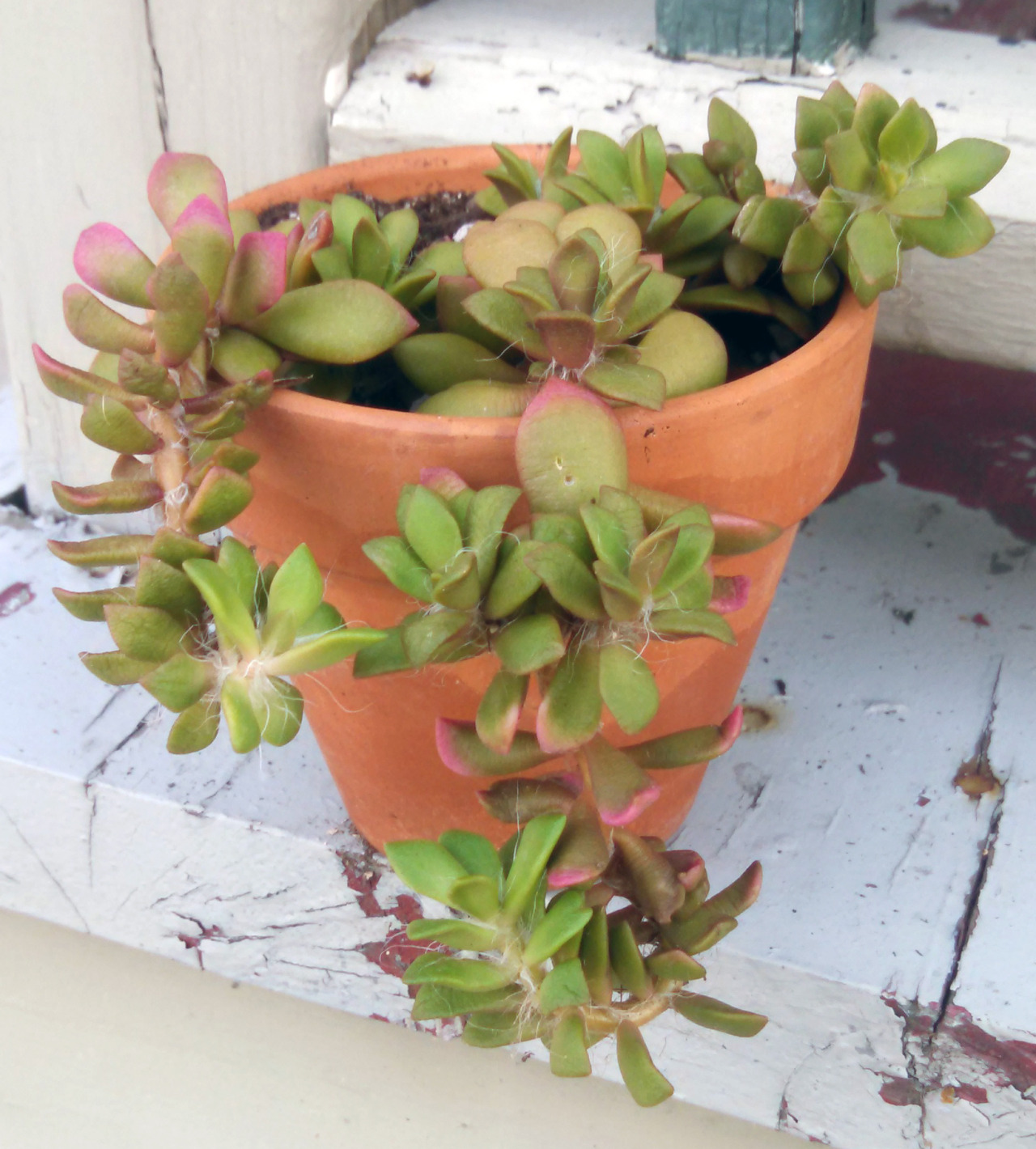Anacampseros telephiastrum ‘variegata’
My own personal experience with Anacampseros telephiastrum ‘variegata’ is that it was another plant that I used to keep but gave away (it was actually this exact one pictured above…) because when I purchased it it has much brighter and intense pink coloration but it has since faded and took on this unusual growth pattern that I wasn’t expecting it to have at the time. With time and my increasing I began to realize that Anacampseros telephiastrum ‘variegata’ is a weird species in a very weird genus (Anacampseros are all VERY ODD) and despite looking like it should grow into clumping rosettes, it actually grows into groundcover-y vines. this species is also very similar to Anacampseros rufescens, and can easily be confused for one another, despite slightly different leaf shapes.
General Info
Anacampseros telephiastrum ‘variegata’ is a dense mat and caudex forming succulent with lanceolate shaped green, bright pink and yellow or cream colored leaves. They can be grown compact as rosettes, but with time they start go grow longer and longer and offsetting to create a dense mat or trail over the edge of pots. With age they also can form a small caudex as the base of the plant, but because of how very slow growing they are this takes a very long amount of time. Anacampseros telephiastrum ‘variegata’ prefers bright but not direct and cool light. It doesn’t want to get too hot or too full of sunlight making it a good candidate for shadier out of the way spots. But if the spot that they are in does not have quite bright enough light they will lose their bright pink coloring and become much more dull like the specimen pictured above. Because the leaves of Anacampseros telephiastrum ‘variegata’ have a thinner epidermis they are more prone to damage and combined with their slow growth rate they are definitely a succulent that you are going to want to be careful with. In fact I consider Anacampseros telephiastrum ‘variegata’ to be similar to mesembs, to whom they are somewhat closely related, because they are also very delicate and grow slowly. And like many mesembs Anacampseros telephiastrum ‘variegata’ goes dormant and rests during winter and doesn’t like to be watered. But come growing season Anacampseros telephiastrum ‘variegata’ like regular waterings, and maybe even a bit more often than some other types of succulents. Lastly Anacampseros telephiastrum ‘variegata’ does not like cold and will be damaged in temperatures below 36°F making it one of the first plants you should bring in for winter. I would reccoment the very odd Anacampseros telephiastrum ‘variegata’ as more of an oddity that should be kept by someone who is looking for a small plant that doesn’t do to much but requires a careful consideration of it’s needs.
Characteristics
Native to: South Africa
Height: 6 inch max tall, but may hang over the edge of a pot
Spread: ≤ 1 foot max
Hardiness: from 36°F
Light Requirements: Partial Shade to Partial Sun
Water Requirements: Moderate (average for succulents)
Flowers: Pink and simple in late spring
Other: Bright coloration, great in hanging pots, low maintenance, easily propagated, grows slowly and stays small
Species Classification
Kingdom: Plantae
Clade: Angiosperms
Clade: Eudicots
Clade: Core Eudicots
Order: Caryophyllales
Family: Anacampserotaceae
Genus: Anacampseros
Species: A. telephiastrum
Variety: ‘Variegata’


